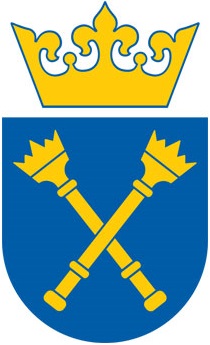Sources of Law from the Past contains 4 424 digital objects
User’s guide
1. Type of objects.
"IURA. Sources of Law from the Past" contains text objects in PDF or HTML formats. Efforts are being made to include objects in text format and scans of the original source in parallel, especially in the case of manuscripts.
2. The rationale for recognising small text fragments as independent objects.
One of the main tasks of the database is to ensure that users can quickly find the legal and juridical texts they need. For this reason, individual court decisions and sometimes, especially in the case of medieval law, individual rules have been treated as separate units. In the latter case, this is justified by the possibility of automatically comparing textual variations (see section 6).
3. Graphical object sign.
Each graphic object sign contains several buttons, activating the following functions:
* at the top there is a button referring to the structure in which the object is located, for example: the location of a given Supreme Court judgment in the collection of Criminal Court Decisions of the 19th and 20th centuries;
* the main part of the object refers to a subpage of the object;
* at the bottom there is in turn:
- a button to add the text of the object for comparison (this results in the object appearing in the compare tab at the top of the main portal page);
- add to favourites (function available after logging in);
- citation export
- direct display of an object without the object subpage.
4. Search methods.
The following search methods are provided for:
- search window (especially recommended),
- by searching the collection structure (highly recommended),
- through indexes.
* In the search window, typing a word results in a search of:
- all object metadata, including keywords
- the content of all the units listed in "IURA"
- the scope of the search can be narrowed down.
* If an object whose content contains the search term is included, the content will be underlined in the object’s text.
* It is possible to enter word particles into the search window, instructing the search to look for variants of the word: instigator* -> will search for instigator, instigatoris etc.
* The search tool takes into account numerous spelling ambiguities, in particular
- diacritical marks, for example taking into account: o -> ó
- in Latin spelling, for example: v -> u
By selecting a collection and pressing the 'Collection structure' button, a logical structure is displayed, showing an ordered catalogue of objects, including individual articles of legal acts or judgments based on specific articles.
By selecting a collection and pressing the "Search collection" button, all objects included in the given collection will be displayed. By selecting the 'Filter' button, the search can be narrowed down within the selected collection.
Among the buttons on the main page, at the top right, is the "INDEX" tab. This allows you to search by keyword and other metadata (date, authorship, language, etc.).
5. Cross-references between objects
With the development of "IURA", objects will be logically linked to each other through a system of internal cross-references. A classic example would be a law. Under each article there will be references to judgements in the database or to relevant excerpts from other texts, for example from the constitution of the Old Polish Sejm to the works of 16th - 18th century lawyers.
6. Comparison of objects
"IURA" includes a text comparison tool. It allows you to add up to 10 objects for comparison and thus obtain an image of the differences between them (the first selected text will be the basis for comparison). It is recommended to compare smaller units of text, for example, individual articles of medieval manuscripts. Provision is made for exporting the results of the comparison using the print button (save as PDF). For export, we recommend setting the paper orientation to landscape in the print options.




